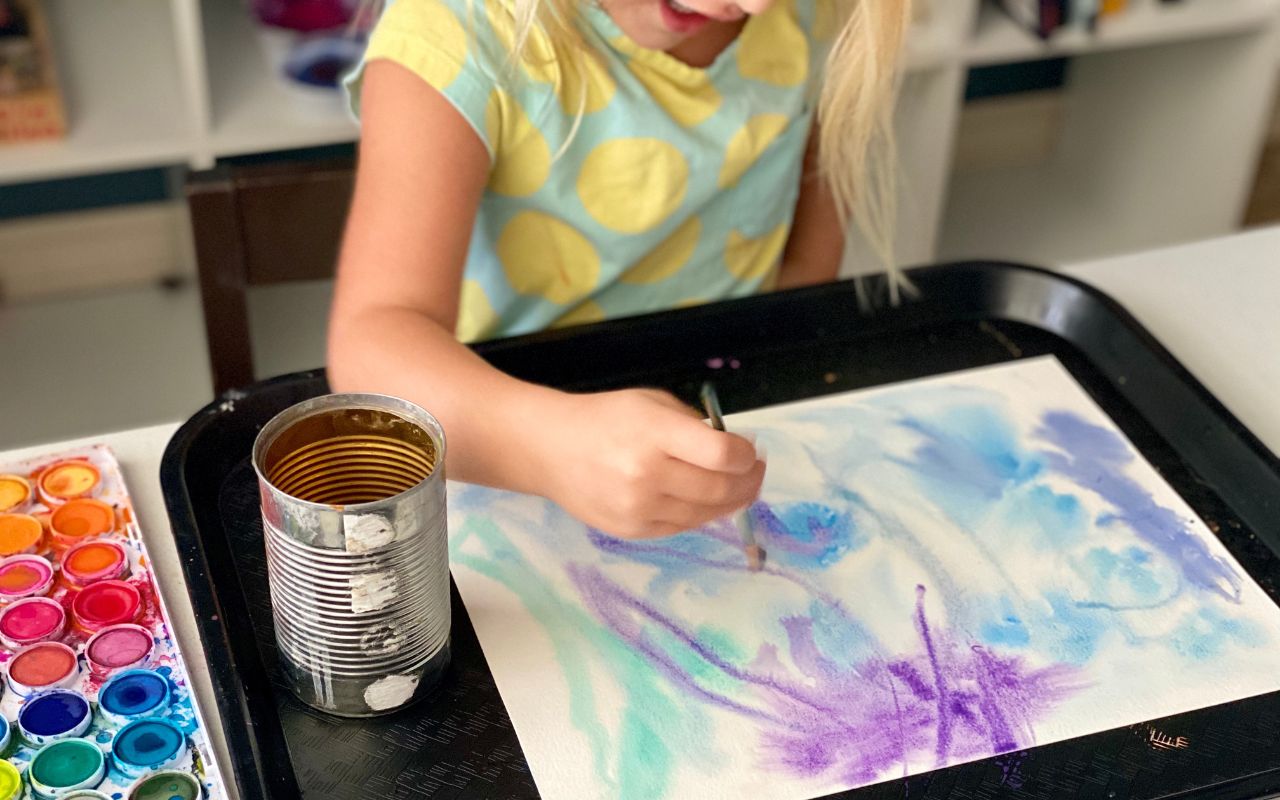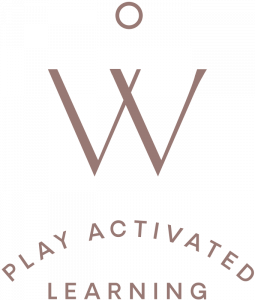This play invitation unfolds the wonder of mixing pigments in water, creating unexpected color compositions.
Children can develop spatial awareness and observational skills, while experimenting with color mixing and learning about the influence of water in spreading, dissolving, and dyeing.
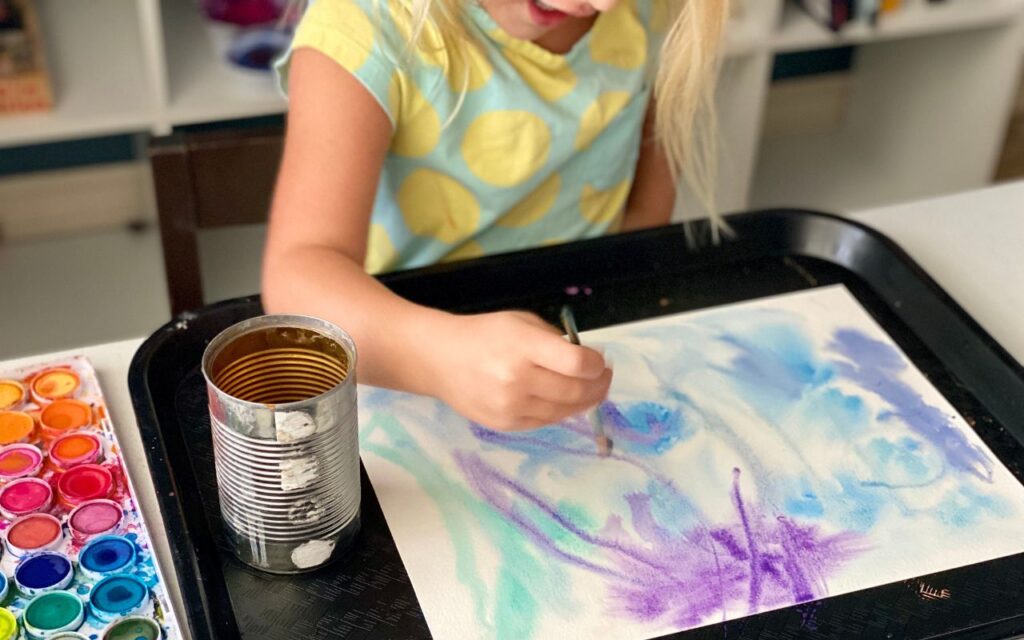
What Could Lead Us to This Play Invitation
- Children have been observing the effect of rain dropping on different surfaces;
- Children are curious about dissolving things like soap, salt, sugar, and chocolate;
- Children are excited about mixing colors.
Materials Needed
- Watercolor cakes in a variety of colors
- Watercolor paper (or another thick paper)
- Cups of water
- Thick and thin brushes
Setting up This Play Invitation
- Choose a surface where children can work with the water and paint. You can use trays, tables, or the floor.
- Place all the materials within the children’s reach. Make sure you have a thick brush to spread the water on the paper and a thinner one for the watercolors.
Tip: Have dry cloths or paper towels handy to clean any excess water that could interfere with or damage the children’s artwork.
How to Create the Painting
- Using the thicker brush, brush plain water over the entire surface of the paper. Make sure it is thoroughly soaked.
- Dip a moistened thinner brush into the watercolor cake and touch the wet paper in different spots with the tip of the brush.
- Observe the color spreading and mixing.
- Rinse the brush and add another color.
- Dry the painting horizontally.
Optional next step: Use the dried painting as a base for a drawing with black sharpies. Or, invite children to observe the painting and give their own meaning to the shapes formed by the colors.
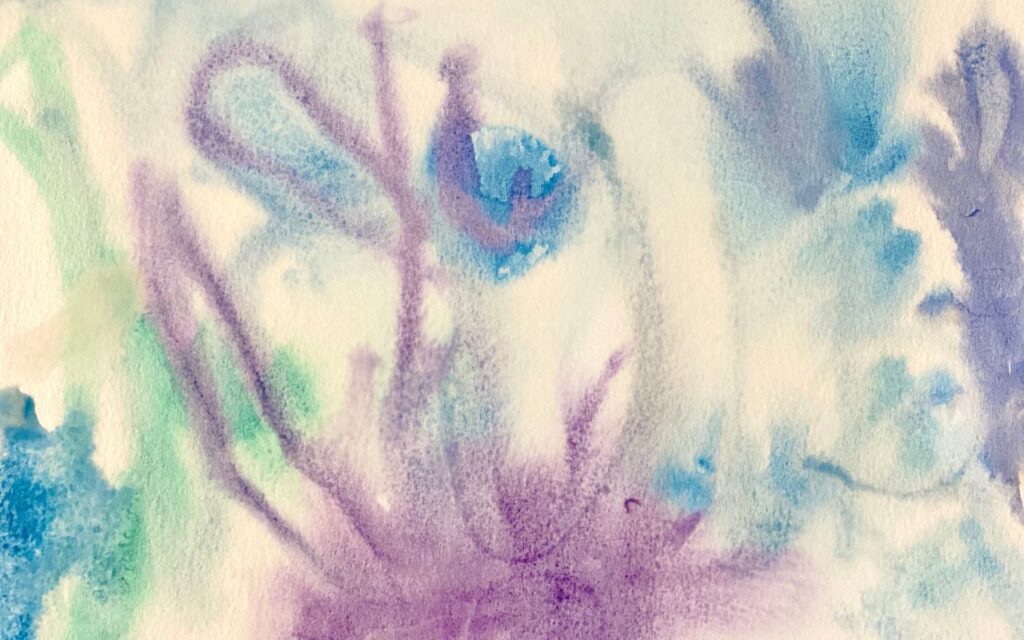
How to Nurture the Natural Unfolding of the Child’s Identity During This Play Invitation
- Children have the right to work in a position that best represents their developmental stage. Allow children to work standing up, if they like.
- Honor children’s work by providing a clean and safe environment so they can fully engage in their experiences.
- Children need to be able to explore materials and see the results of their exploration. Offer plenty of opportunities for children to repeat and master the process.
- Children have the right to modify their work until they are satisfied with it. Do not declare that the child’s exploration is over, just because you believe the painting is “already so beautiful.”
The Academic Learning Opportunities
- MATH: Name and describe spatial elements like over, middle, left, right, and under. Build awareness of quantity: “There is more here,” or “Here, there is less.”
- LANGUAGE: Explore and expand vocabulary.
- SCIENCE: Explore concepts such as the state of matter (e.g., concentrated, dissolved, spread, mixed, solid, liquid).
- ART: Develop perception of colors and hues; experiment with composition and visual balance.
Extensions
- Explore the concept of spreading and shape by observing clouds.
Book Recommendation
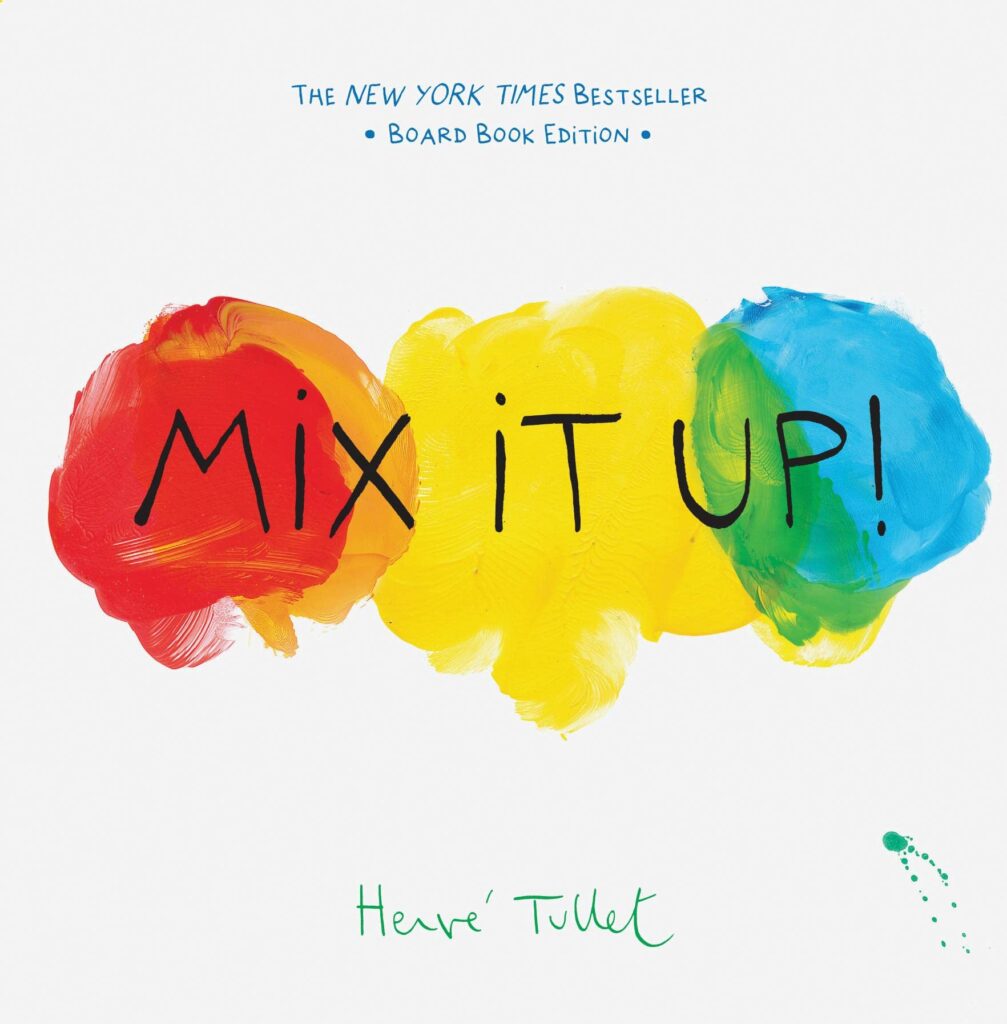
A delightful book about colors and what happens when they mix.
